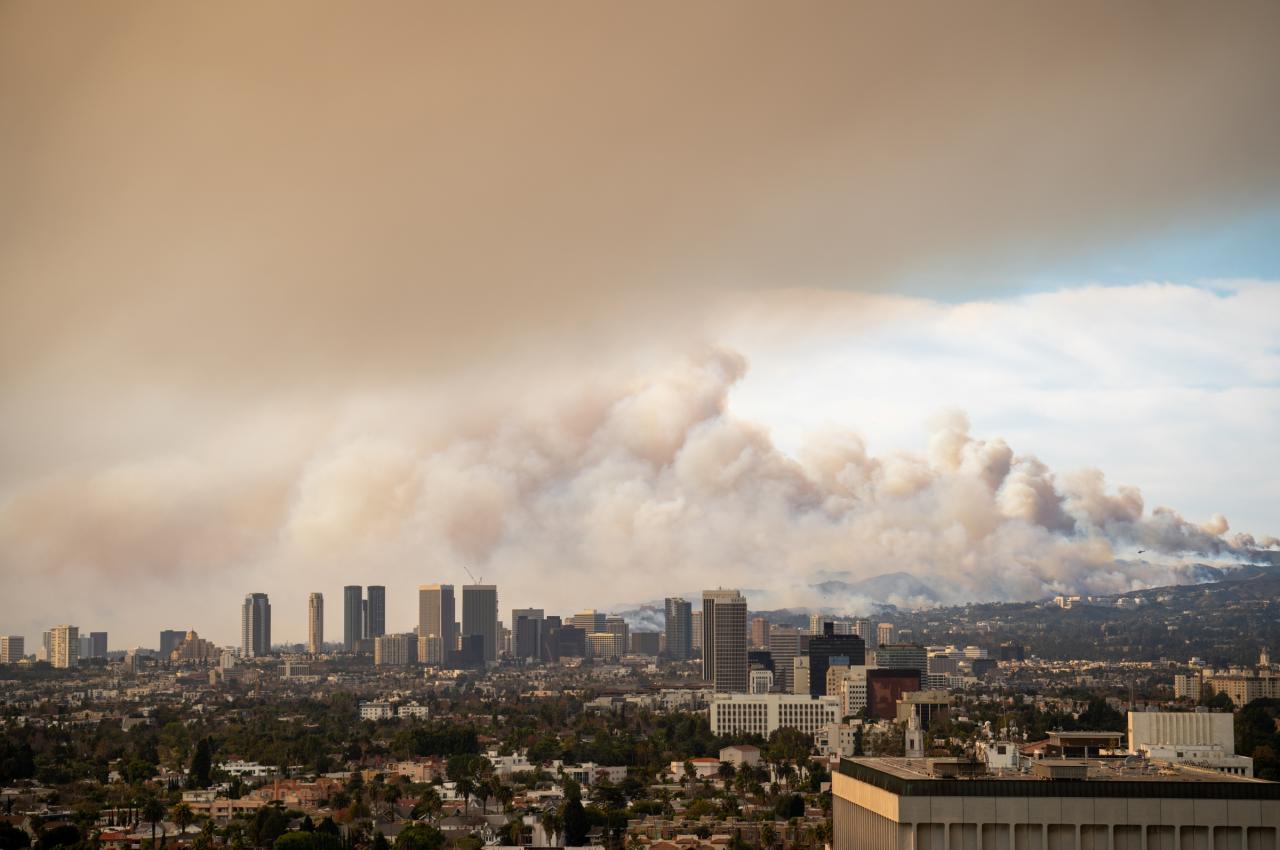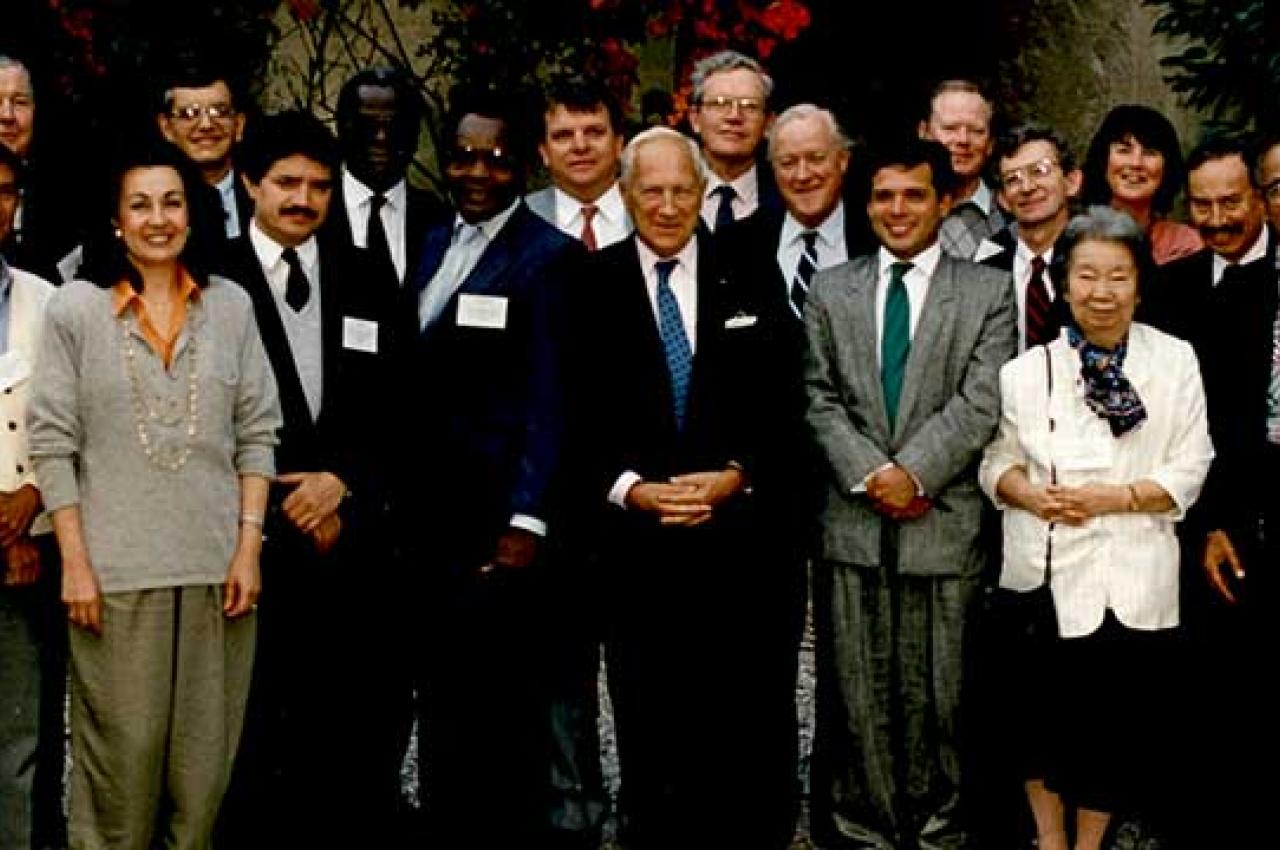Wildfire Smoke Is Obvious. Its Long-Term Health Impacts Are Not
The 2025 Canadian wildfire season is on track to be the country’s second worst on record, burning more than 16.5 million acres and causing wildfire smoke to travel to the Midwest and Northeast United States. Though we may know the air quality is poor through monitoring and subsequent air quality warnings, the physical and mental health implications of wildfire smoke are not entirely known.
Laura Corlin, A13, EG15, EG18, an associate professor of Public Health and Community Medicine at Tufts University School of Medicine, studies and assesses the health effects of environmental exposures. Corlin’s goal is to mitigate climate and environmental health disparities through her research.
She began researching air pollution as a graduate student at Tufts. Nearly a decade later, Corlin said there still isn’t enough data to understand the long-term health impacts, although research efforts have been growing in this area.
“The intersection of wildfires, smoke exposure, and long-term health outcomes is a very active research area,” she noted. “Because of climate change, we are seeing more intense fires, longer fire seasons, and fire seasons that are starting earlier. So, all around, that means more wildfires and more wildfire smoke exposure for people.”
Factors like the location of the fire and the objects that are burned impact not only the amount of smoke someone might breathe in and how it travels, but also what makes up the particulate matter in the air.
Particulate matter is made up of solid particles and liquid droplets in the air, and when organic and non-organic items burn, particulate matter like soot, and fine particulate matter which is microscopic, can travel long distances. Some particulate matter can travel very far—in certain cases as far as thousands of miles.
“We know that wildfire smoke exposure is associated with increased risk of all-cause mortality, cardiovascular hospitalizations, and respiratory hospitalizations,” Corlin said. “In terms of long-term impacts, there’s been a lot of work recently looking at mental health, and in particular, focused on post-traumatic stress disorder, generalized anxiety, and depression, mostly for people who are in the direct impact zone of fires. If you’re evacuating, you might have interruptions to access to health care, you might lose your home or whatever is in your home.”
Breathing this matter in, specifically the fine particulate matter with a diameter of less than 2.5 micrometers (or about 30 times smaller than the diameter of the average human hair) can contribute to serious short- and long-term health outcomes because of the way they lodge in the lungs.
“There is some evidence that breathing in wildfire smoke can be more toxic to people than just general air pollution from car traffic, which we already know is very bad for you,” Corlin said while talking about the historic 2024 Southern California fires.
A study published by the Environmental Protection Agency in 2023 notes that urban wildfires, or fires that occur in the wildland urban interface (WUI), are a massive driver of health risks since and states “they are one of the largest sources of pollutants in the atmosphere and, in some parts of the United States, can contribute as much as 50% of the fine particulate matter (PM2.5) during active fire years and cause poor air quality in large parts of the United States for weeks at a time.”
Corlin noted that it’s even harder to measure specific impacts of wildfire smoke on vulnerable populations, such as pregnant people, who may be more severely affected.
“Wildfire smoke is associated with preterm birth, low birth weight, and possible congenital anomalies,” Corlin said. “It’s harder to study associated increased risk of hypertensive disorders like preeclampsia, gestational diabetes, or other things that would develop during pregnancy. The effects of wildfire smoke would likely vary depending on when in pregnancy someone is exposed.”
The Intersection of Pregnancy and Wildfire Pollution
When Lena Sharara was studying for her Master of Public Health at Tufts University School of Medicine through the accelerated Bachelor-Master of Public Health program, she wrote a narrative review, Wildfires and Pregnancy Outcomes. Sharara, A24, MG25 (MPH), associated wildfire smoke exposure with pregnancy complications to create a review that paves the way for “more precise, equitable, and justice-oriented public health responses to wildfire smoke exposure in pregnancy.”
Sharara developed an interest in how wildfire smoke poses a public health threat, specifically to pregnant people, while she worked as a research assistant at the Maternal Outcomes for Translational Health Equity Research (MOTHER) Lab at the Center for Black Maternal Health and Reproductive Justice at the School of Medicine. As part of her role, Sharara served as the co-chair of the Lab’s Community Engagement, Advocacy and Policy (CEAP) initiative, as well as one of the hosts of the MOTHER Lab podcast.
It was during an episode of the podcast that Sharara first learned about the risks associated with air quality and maternal and fetal outcomes.
“A Howard University researcher found a lack of air quality monitoring in marginalized communities and noted the impact that can have on quality of life,” Sharara said. “There’s an area of data that’s completely missing. I had that in the back of my mind as I considered my own research.”
Soon after that conversation, the 2024 Southern California wildfires gripped the nation and dominated headlines, with fires in the Palisades and Eaton neighborhoods burning more than 35,000 acres, fueled by drought and strong, dry Santa Ana winds.
“Those fires were a big topic in a lot of my classes, and I realized that although there is a little bit of data that's been collected on wildfires and pregnancy outcomes, I wondered what might have been collected about marginalized communities and low-income communities,” Sharara reflected. “If these communities don’t have ways to monitor air quality, then there's probably a significant number of people, pregnant and otherwise, who are affected by wildfire smoke who don't even know it.”
Sharara’s paper calls for an increase in air quality monitoring in rural areas and communities of color, specifically with ground-level monitoring that provides real-time readings of fine particulate matter levels, since these areas historically have been found to have fewer air quality monitoring stations.
“It’s important for researchers in the field to consider collecting this data accurately so that as wildfires continue to happen, we have ways to protect all communities,” Sharara shared.
Latest Tufts Now
- How Rural Women Advance India’s Sustainable FutureAjaita Shah’s innovative “tech + trust” model has built a network of women entrepreneurs
- A Tufts-Led, Historic Commitment to SustainabilityThirty-five years ago, Tufts guided other universities to the creation of the Talloires Declaration. Its legacy endures today
- New Thriller Blurs Lines Between Good Guys and VillainsAction comedy by Elliot Ackerman blends humor with serious themes, and is headed for Apple TV
- Recognizing Job Burnout and What to Do About ItThe most effective solution to burnout at work is employee-focused organizational change, says Tufts expert
- Working Toward Reducing Chemical Industry Dependence on PetroleumTufts researchers receive up to $4.5 million from DARPA to create robust, flexible biosynthetic manufacturing
- Does Climate Change Lead to Conflict?Tufts researcher shows connection between low rainfall and the outbreak of civil wars between African pastoralists and farmers













